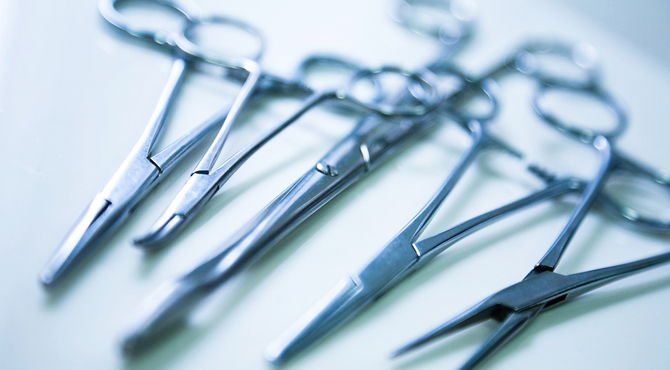Plastic surgery can be glamorized by the media, often making it appear to be an event nearly analogous to choosing new makeup or a new hair style. Nothing could be further from the truth. There are many factors that should go into one’s thought process when considering elective cosmetic surgery. The first and most important consideration is to recognize that it is a surgical procedure. Any surgery brings with it attendant risks and possible complications, as well as many benefits, and one should consider all of them carefully.
There are three main questions that one should have fully and completely answered before undertaking any procedure.
Am I really a candidate for this particular surgery? (The doctor should go into detail as to his/her opinion on that subject.)
What are the risks involved? (Again, there should be a comprehensive response given to this question by the surgeon with whom you are consulting.)
What are the most important steps? (I refer to this in terms of having sound expectations of one’s postoperative short- and long-term results and even, in some instances, preparing oneself physically for surgery.)
You should have a good idea of what you perceive your needs to be in terms of cosmetic surgery or aesthetic surgery. The motivation should not be simply that your friends are doing it or that you have reached a certain age. Not everyone is a candidate for aesthetic surgery nor needs aesthetic surgery, for that matter. The next step is to choose a qualified physician. It is very important that you choose a plastic surgeon who is Board Certified in Plastic Surgery by the American Board of Plastic Surgery (ABPS). This is the only plastic surgery certification granted by the American Board of Medical Specialties (ABMS). You should then take it upon yourself to learn all you can about this doctor. Good sources include information from your own private physician as well as personal referrals from trusted acquaintances.
One should be prepared for the consultation by having questions ready concerning the procedures in which you are interested. While the doctor is evaluating you, you should be evaluating the doctor.
Your physician should discuss not only the benefits of the procedure, but also the risks and possible complications to attendant surgery, in general, as well as those specific to the procedure being considered. While the risks in aesthetic surgery are very low, they do exist. It is critical, of course, that you be a healthy patient and have preoperative clearance conducted, including some required tests based on age and the procedures being performed.
I have generally found that patients approaching aesthetic surgery today are much more informed than in the past, but are not always aware of the postoperative course, which can include obvious bruising, swelling and may necessitate downtime or time out of the public eye. This can be of great concern for women with prominent positions in the workforce or those in constant contact with the public or their clientele. They need to be given realistic information regarding the degree of bruising, swelling and inactivity, and a realistic timeframe as to when they can return to work or exercise. Among the cosmetic procedures available, there is a wide range of planning for time away from work or normal, daily activity.
Timing and scheduling considerations are obviously different for eye surgery or facial surgery or surgery of the nose, breast surgery or body sculpture surgery. It is important to be an informed consumer. I have always found that patients who are well informed make the best patients. The well-informed patient understands the preparation for surgery, the nature of the surgery itself, the type of anesthesia that will be provided, the risks attendant to the anesthesia, as well as the risks attendant to the surgery itself.
Many patients find it beneficial to seek additional consultations with the same doctor as well second opinions. Certainly, it is my advice to have a second opinion with the doctor to go over any questions or concerns in greater detail and to achieve a better understanding of the process. Today, for many patients, this is done online for convenience to the patients. However, nothing replaces a personal visit when it is possible.
The most common procedures done today nationwide for women are:
Breast augmentation. The most commonly sought procedure with well over 350,000 cases being performed last year. I find breast augmentation consultations to be among the most lengthy and for justifiable reasons. Not only should aesthetic aspects be thoroughly discussed, but also the complications involved, the possible long term problems and the nature of the implants being used. Patients also ask me about other options for breast augmentation such as fat autografting and other types of techniques, not all of which have merit, in my opinion.
Liposuction. Liposuction is done not only in women, but in men as well. It is a successful operation with a generally low complication rate, but the expected result should be discussed. Also up for discussion should be the possible need for secondary procedures which may happen with liposuction, the postoperative course, and when and how long it takes to see the final result, which can be up to six months.
Eyelid and facial surgery. Many patients also benefit from injections of filling agents such as Juvéderm, Restylane, Radiesse, Sculptra, as well as the muscle relaxing agents such as Botox and Dysport, which temporarily but effectively combat the appearance of wrinkles.
Any procedure, even the most minimal, has risks and possible complications. Make it your business to be an informed and prepared patient. You are your own best advocate.
Dr. Lawrence S. Reed, M.D. is a board certified plastic surgeon with The Reed Center for Plastic Surgery on the Upper East Side in Manhattan. To learn more, visit http://www.thereedcenter.com.





